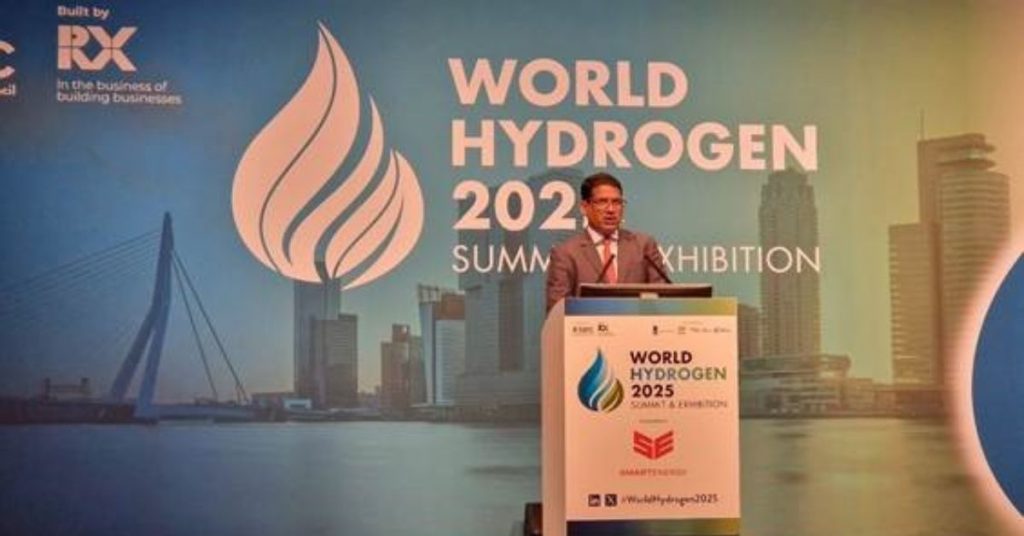At the World Hydrogen Summit 2025, held in Rotterdam, the Ministry of New & Renewable Energy (MNRE), Government of India, emphasized the country’s growing leadership in renewable energy and its strategic push into green hydrogen. Secretary Shri Santosh Kumar Sarangi delivered a keynote address outlining India’s vision and progress toward building a robust green hydrogen ecosystem.
Sarangi spotlighted India’s rapidly expanding renewable energy capacity, now exceeding 223 GW—comprising 108 GW of solar and 51 GW of wind energy—making the nation one of the fastest-growing clean energy markets globally. He reiterated India’s long-term targets: achieving energy independence by 2047 and net-zero emissions by 2070.
A key instrument driving this shift is the National Green Hydrogen Mission, launched in 2023 with an initial outlay of USD 2.4 billion. The mission sets ambitious targets, including:
- Producing 5 million metric tonnes (MMT) of green hydrogen annually by 2030
- Reducing CO₂ emissions by nearly 50 MMT per year
- Attracting up to USD 100 billion in investment
- Generating more than 600,000 green jobs
- Creating demand in key industrial sectors and offering production incentives
India has already allocated 862,000 tonnes per annum of green hydrogen production capacity to 19 companies and awarded 3,000 MW of annual electrolyzer manufacturing capacity to 15 firms. Pilot projects are currently underway in the steel, mobility, and maritime sectors.
The government has also launched the Green Hydrogen Certification Scheme to provide assurance on the origin and sustainability of hydrogen production. A “whole-of-government” approach has been adopted, including major regulatory reforms—such as exempting green hydrogen and green ammonia facilities from environmental clearance requirements.
Additionally, three key ports—Kandla, Paradip, and Tuticorin—have been designated as future green hydrogen hubs by the Ministry of Ports, Shipping and Waterways. So far, 15 Indian states have announced individual policies to promote the green hydrogen sector. While significant progress has been made, Sarangi acknowledged that the industry still faces challenges, including high production costs, lack of standardization, and infrastructure gaps. Overcoming these barriers will be critical to scaling up India’s hydrogen economy and meeting global energy transition goals.




Recent Posts
Stena Line’s Hybrid Ferry Stena Futura Completes Sea Trials, Set to Boost Irish Sea Freight Capacity
Taiwanese owner makes methanol move with WinGD across multiple engine orders
Econowind installs four VentoFoils on tanker M/T JUTLANDIA SWAN
Global Maritime Groups Unite to Launch Alliance for Electrification of Shipping Sector
India Charts Green Future for Maritime Sector with Hydrogen Hubs and Sustainable Port Strategy
ZeroNorth’s SMARTShip platform integrates with ClassNK MRV portal to automate emissions reporting
Towngas Partners with TLB, Pacific Basin to Advance Green Marine Fuel Infrastructure in Hong Kong
SECI Extends Bid Deadline for Green Ammonia Tender Under SIGHT Scheme